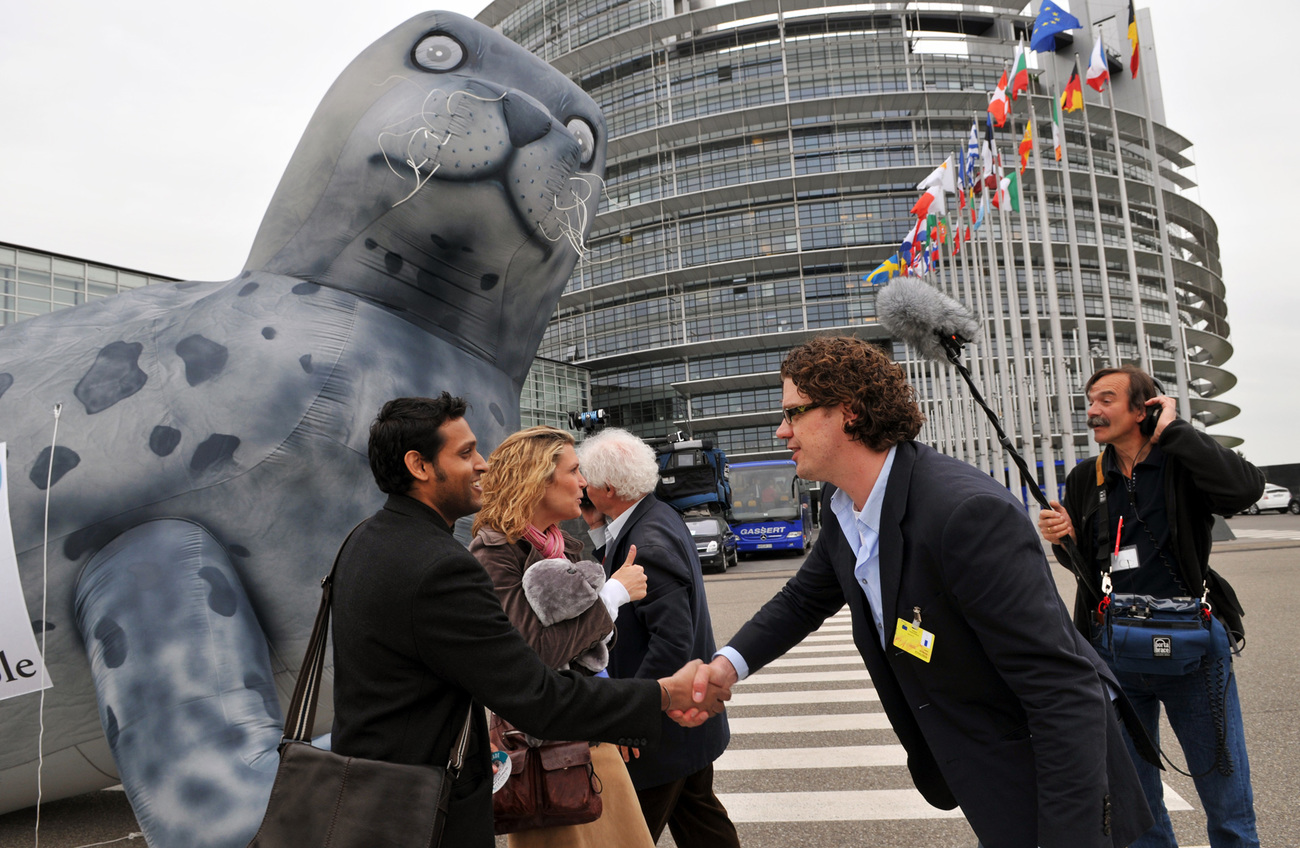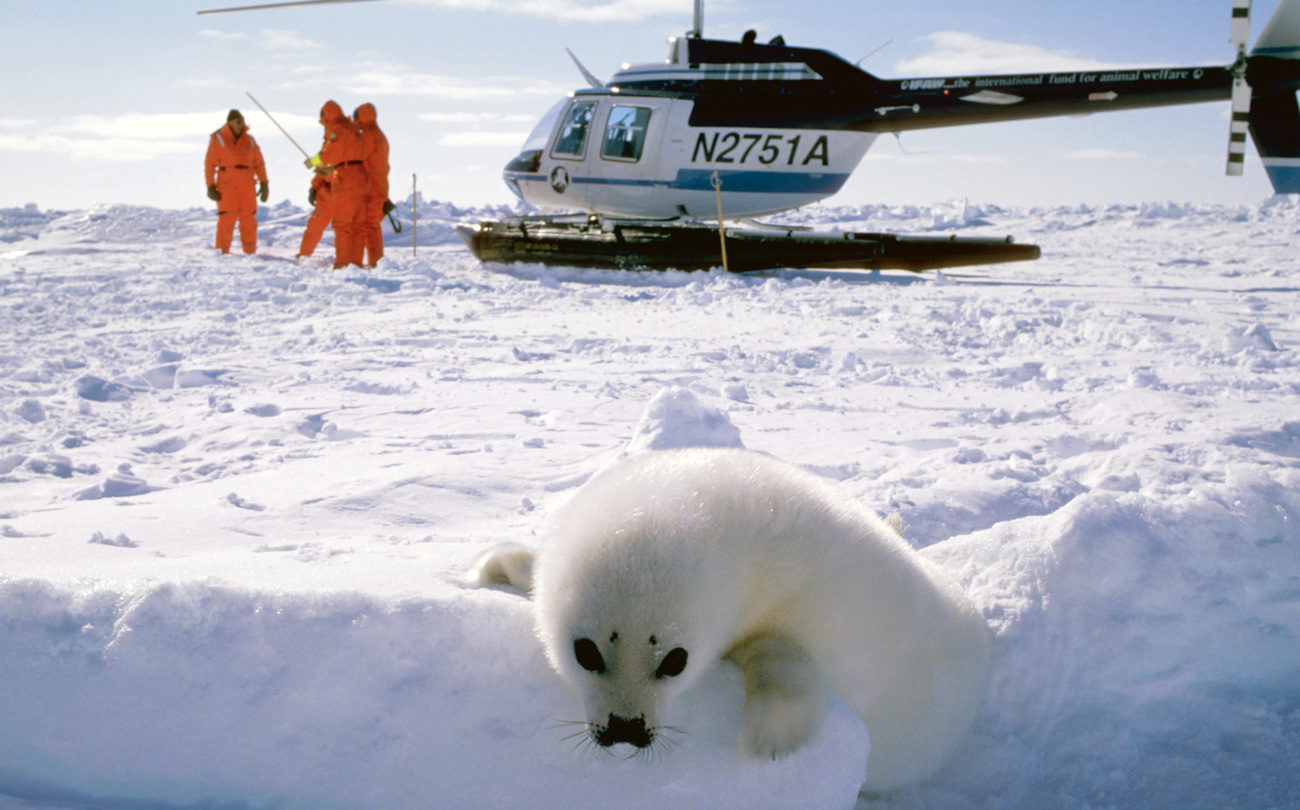Barbara Slee
EU Seal Trade Regulation needs to be celebrated, not evaluated
EU Seal Trade Regulation needs to be celebrated, not evaluated
On 15 May 2024, the European Commission launched a public consultation to evaluate the EU Seal Trade Regulation, which was first enacted in 2009. This inconspicuous announcement reads as follows:
‘This initiative will assess if the rules in place remain fit for purpose, focusing on their socio-economic impact and their impact on seal populations.’

For some, this short sentence might not raise any alarm bells, but for us at IFAW, it does.
IFAW has been fighting to end the atrocities of the Canadian seal slaughter since 1969, when Brian Davies first founded our organisation. Our first major victory came in 1982, when Europe voted in favour of a ban on the import of whitecoat harp seal and blueback hooded seal skins.
But it didn’t end there, and after many years of uphill battles that we managed to win, our advocacy work was eventually solidified in the greatest victory for animal welfare of all time: The World Trade Organisation confirmed in its final judgment in 2014 that animal welfare concerns are a legitimate reason to restrict trade and that the EU is justified in banning the import and sale of products from cruel seal hunting.
The current initiative announced by the European Commission could be compared to a routine servicing of one’s car—checking tire pressure, changing oil, and replacing fluids—and when undertaking such servicing, you would do these checks to see if your car still runs according to its purpose: to bring you by road from A to Z.
In this case, the Commission aims to assess if the EU Seal Trade Regulation still functions according to its purpose. So, let’s remind ourselves of the Regulation’s original goals.
History of the EU Seal Trade Regulation
Regulation 1007/2009, better known as the EU Seal Trade Regulation, includes as its objective ‘the elimination of obstacles to the functioning of the internal market by harmonising national bans concerning the trade in seal products at [the] Community level’. When the EU issued its seal product ban in 2009 to harmonise trade rules across the EU, several countries across Europe had already banned the trade in products from commercial seal hunts, including Belgium and the Netherlands.
Another purpose of the Seal Trade Regulation was to address the concerns of citizens and consumers about the animal welfare aspects of killing and skinning seals and the possible presence on the market of products obtained from animals killed and skinned in a cruel way. EU citizens no longer wanted to see products from an inherently cruel commercial seal hunt ending up in shops across the EU.

Why this wording matters
It’s straightforward—the Seal Trade Regulation has fulfilled what it set out to accomplish, harmonising trade rules and ensuring thatseal products from commercial seal hunts are no longer sold in EU markets. That could have been the end of the story.
But evaluating whether the Seal Trade Regulation rules are fit for purpose ‘from a socio-economic perspective or from a biological perspective whether seal populations are impacted’, as mentioned in the evaluation’s introductory text, can be compared to servicing your car to see whether it flies. The car was never meant to fly, and the Seal Trade Regulation was never aimed at the management or restoration of seal populations.
It’s true that an unintended positive side effect of the Regulation is that by reducing the hunt and not depleting seal populations, we have increased resilience to climate change. As an ice-dependent species, harp seals are already under threat from warming temperatures—so hunting only further threatens their survival. But however noble such a biology-driven intention might be, this is not covered by a Trade Regulation which indeed aims to harmonise trade. The campaigners, communication specialists, and biologists who have been involved with seal campaigns across Europe and Canada see the writing on the wall, and we recognise the ulterior motives which come into play. Seals become the scapegoat when fish stocks are low and fisheries management continuously fails to adhere to sustainable quotas.
Let’s nip this one in the bud: Killing seals because they supposedly kill too many fish and selling the products with the argument that ‘this is the most sustainable and ethical way of dealing with seals eating fish’ is like taking the wheels off your car because it doesn’t fly. Bigger marine mammals and fish like sharks play a vital role in the ocean, and we need them desperately to keep our marine ecosystems healthy.

The EU Seal Trade Regulation is a massive feat, a true milestone, and an amazing victory confirming that animal welfare indeed concerns citizens of Europe—and that welfare triumphs over trading products obtained in a cruel and unethical manner. This is a classic example of why we need the EU and its institutions—to defend our values and reiterate the importance of people and wildlife thriving together.
How you can help
We ask our supporters to participate in this important public consultation, which will close on 7 August. If you want an in-depth explanation of the questions, see IFAW’s information document linked below.
Related content
Every problem has a solution, every solution needs support.
The problems we face are urgent, complicated, and resistant to change. Real solutions demand creativity, hard work, and involvement from people like you.